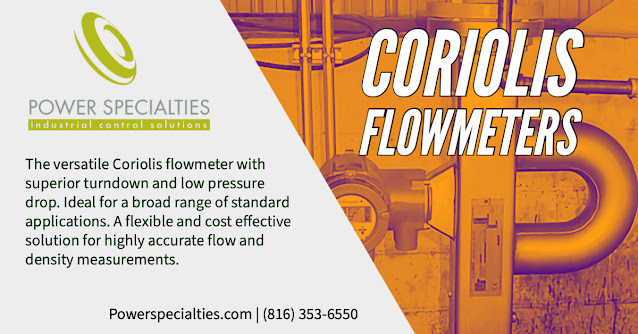At its most basic description, a Coriolis mass flowmeter is a U-shaped tube that vibrates or deflects as fluid flows through it. This type of mass flow meter is based on angular momentum conservation as it applies to the Coriolis acceleration of a fluid. The tangential force felt when walking radially outward on a rotating platform is known as Coriolis acceleration. The force occurs when one's position with the center of rotation changes.
Principle of Operation of Coriolis Mass Flowmeters
Fluid enters the U-shaped tube is forced to move vertically in response to the vibrating tube. The fluid flowing into the meter resists the force by pushing down on the tube when the tube moves upward. The fluid flowing out of the meter, having been forced upward, resists, reducing its vertical motion by pushing up on the tube — the tube twists due to the two opposing forces acting on it. The twist is proportional to the mass rate of fluid flowing through the tube.
Operation and Major Components Coriolis Mass Flowmeters
A mass flow meter includes a vibrating U-shaped tube that generates and measures Coriolis acceleration. In place of the previously described rotational motion, the inlet and outlet of the tube remain fixed. In contrast, the tube is vibrated sinusoidally about an axis formed between the inlet and outlet, typically by a magnetic device located in the bend. Most devices use magnetic sensors on each side of the flow tube to measure the velocities, which change as the tube twists.
Coriolis mass flowmeters apply to liquid applications such as harsh chemicals, low to medium viscosity, foods, slurries, and blending systems. Gas applications are somewhat limited because the density of low-pressure gases is usually too low to operate the flow meter accurately.
For more information about Coriolis mass flow meters, contact Power Specialties by visiting https://powerspecialties.com or by calling (816) 353-6550.
